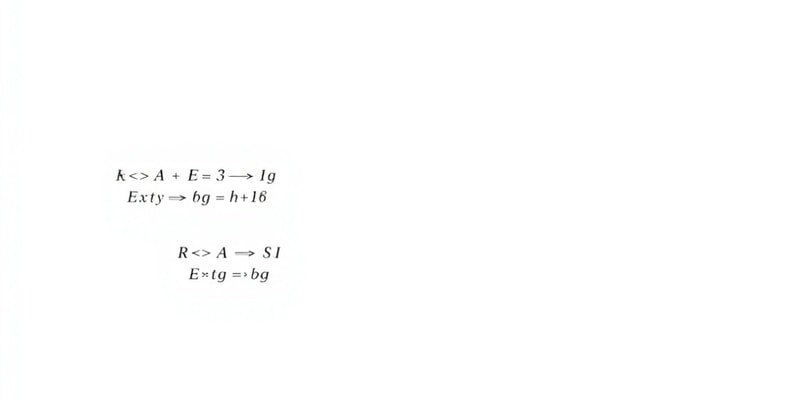Podcast
Questions and Answers
Which law allows for changing the order of variables connected by AND connectives?
Which law allows for changing the order of variables connected by AND connectives?
Which of the following is NOT one of the transformation laws in propositional logic?
Which of the following is NOT one of the transformation laws in propositional logic?
Which law states that A ∨ A is equivalent to A?
Which law states that A ∨ A is equivalent to A?
If you replace all ∨ with addition and ∧ with multiplication, which logical equivalence still holds?
If you replace all ∨ with addition and ∧ with multiplication, which logical equivalence still holds?
Signup and view all the answers
In the logical expression ¬A ∨ A ∧ ¬B ∨ A ∧ B, which rule can be applied to simplify the expression?
In the logical expression ¬A ∨ A ∧ ¬B ∨ A ∧ B, which rule can be applied to simplify the expression?
Signup and view all the answers
What is the result of applying the Complement law to the expression A ∧ ¬A?
What is the result of applying the Complement law to the expression A ∧ ¬A?
Signup and view all the answers
Which connective signifies that at least one of the propositions must be true in propositional logic?
Which connective signifies that at least one of the propositions must be true in propositional logic?
Signup and view all the answers
What does De Morgan's laws allow a user to transform between?
What does De Morgan's laws allow a user to transform between?
Signup and view all the answers
What is the characteristic of a proposition in disjunctive normal form (DNF)?
What is the characteristic of a proposition in disjunctive normal form (DNF)?
Signup and view all the answers
Which normal form requires that every literal appears only once in a conjunction?
Which normal form requires that every literal appears only once in a conjunction?
Signup and view all the answers
In conjunctive normal form (CNF), how is a proposition structured?
In conjunctive normal form (CNF), how is a proposition structured?
Signup and view all the answers
What type of reasoning system does Hilbert calculus refer to?
What type of reasoning system does Hilbert calculus refer to?
Signup and view all the answers
What can be inferred from a truth table about a proposition?
What can be inferred from a truth table about a proposition?
Signup and view all the answers
What does idempotent law allow in propositional logic?
What does idempotent law allow in propositional logic?
Signup and view all the answers
Which proposition is an example of a CNF?
Which proposition is an example of a CNF?
Signup and view all the answers
What is the significance of a row in a truth table evaluating to true?
What is the significance of a row in a truth table evaluating to true?
Signup and view all the answers
What can be concluded if a formula contains both a variable and its negation?
What can be concluded if a formula contains both a variable and its negation?
Signup and view all the answers
What is the outcome when a formal system contains a contradiction?
What is the outcome when a formal system contains a contradiction?
Signup and view all the answers
What is the role of axioms in a formal system?
What is the role of axioms in a formal system?
Signup and view all the answers
What does the symbol ⊢ represent in propositional logic?
What does the symbol ⊢ represent in propositional logic?
Signup and view all the answers
Study Notes
Transformation Rules in Propositional Logic
- Table 5 summarizes the most important laws for transforming formulas in propositional logic.
- The laws include idempotent, commutative, associative, absorption, distributive, De Morgan's, complement, and double negation.
- The laws allow for manipulating propositions using logical connectives (AND, OR, NOT).
- Many of the laws have analogies to arithmetic, such as the commutative and associative laws.
- De Morgan's laws have no equivalent in arithmetic but allow for manipulation of negation and logical connectives.
Normal Forms
- Normal forms are standardized ways to represent propositions for easier manipulation and analysis.
- Disjunctive Normal Form (DNF):
- A proposition in DNF is expressed as a disjunction (OR) of conjunctions (ANDs).
- Each conjunction may contain literals (propositional variables) in their positive or negated form.
- Conjunctive Normal Form (CNF):
- A proposition in CNF is expressed as a conjunction (AND) of disjunctions (ORs).
- Each disjunction may contain literals in their positive or negated form.
- Reduced Normal Forms:
- Require every literal to appear only once in each conjunction of a DNF or disjunction of a CNF.
- Duplicates of literals can be removed using the idempotent law.
- If a literal appears in positive and negated forms, it can be simplified by removing the respective conjunction or disjunction.
Constructing Normal Forms
- Every proposition can be transformed into DNF or CNF using the transformation laws.
- Truth tables can also be used to construct normal forms.
- For DNF, identify rows where the proposition evaluates to true and construct a conjunction for each row, then combine them using disjunction.
- For CNF, identify rows where the proposition evaluates to false and construct a disjunction for each row to ensure it's false, then combine them using conjunction.
Proofs and Formal Systems
- Formal systems are structures used to infer or prove formulas (theorems) from axioms (initial assumptions) using rules of logical calculus.
- Hilbert calculus is a logical calculus that uses axioms and transformation laws.
- Truth tables can also be used as a calculus, proving a formula if it evaluates to true for all possible truth values of the involved propositional variables.
- The symbol ⊢ indicates that a formula can be derived in a particular formal system.
- 𝜑1,...,𝜑𝑛 ⊢𝜑 denotes that 𝜑 can be proven from assumptions 𝜑1,..., 𝜑𝑛.
Consistency and Contradiction
- If a formal system contains a contradiction, then any formula can be proven.
- This highlights the importance of consistency in a formal system.
- Any formal system containing propositional logic and at least one unprovable formula must be consistent.
Studying That Suits You
Use AI to generate personalized quizzes and flashcards to suit your learning preferences.
Description
This quiz covers the essential transformation rules in propositional logic, including laws such as idempotent, commutative, and De Morgan's. Understanding these laws will facilitate the manipulation of propositions using logical connectives. Additionally, the quiz explores normal forms like Disjunctive Normal Form (DNF) and Conjunctive Normal Form (CNF).




